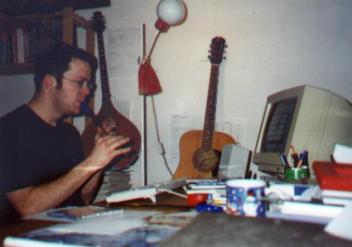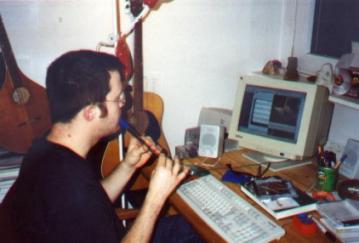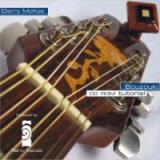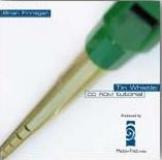
 |
As Irish music stems from an oral tradition, face-to-face communication between advanced musicians and beginners in "trad" music has remained, up to our own day, the most important way of learning how to play authentically. Thus, the new and exciting thing about MadforTrad's CD-ROMs consists in the fact that they give you the opportunity to literally hire one of the most prominent musicians on your favourite instrument as your private tutor, if with a little help of your home computer.
Many of the multi-media features currently available are fully integrated into
the course; as a result, the CD-ROM tutorials combine "textbook" passages, video
clips, photographs and sheet music, thus forming a comprehensive electronic
"coursebook" in any one of the principal "trad" instruments.  In
doing so, MadforTrad seek to make it as easy as possible for amateur
musicians to get the "hang" of Irish music. Notably, even though the tutorials
for any instrument start virtually from "scratch", the courses are designed
for advanced players as well as beginners, because the units progress rapidly
from basic scales and slow tunes to all kinds of metres, fast rhythms, and sophisticated
ornamentation.
In
doing so, MadforTrad seek to make it as easy as possible for amateur
musicians to get the "hang" of Irish music. Notably, even though the tutorials
for any instrument start virtually from "scratch", the courses are designed
for advanced players as well as beginners, because the units progress rapidly
from basic scales and slow tunes to all kinds of metres, fast rhythms, and sophisticated
ornamentation.
Each course consists essentially of a Beginners' and an Advanced section, framed by a brief biographical sketch about, bits of interview with, and a full-length video of an entire set performed by, your "virtual" tutor. Once you run your CD-ROM from a regular web browser, you can "click" your way through any of these sections and follow the instructions on screen. Typically, you will read the text passage introducing any one of the units and then "learn your lesson" from the video clips and musical notation of the tunes.
In Brian Finnegan's
tin whistle tutorial, for example, students are taken from slow airs in G and
D through relatively easy jigs and reels, which, having initially been presented
in "plain" form, are then supplemented with elemental ornamentation like finger
cuts, tongued triplets and rolls. It's nice to see that some of the advice given
by the tutor is especially oriented to the beginner, as in the remarks, "Remember
to tongue the notes for a clear, crisp sound" (for "South Wind"), or "Be careful
in the early stages of playing this tune that you tongue the notes, it will
give you more control of the high octave" (for "Lilting Banshee"). Moreover,
the Beginners' section provides basic information on the cultural background
of "trad" music, such as the classification of jigs or the fact that "dance
tunes used to be played for dancing, but are now played primarily for the mere
pleasure of playing or listening to them" (for "The New Roundabout"). --  The
Advanced section takes you through more jigs and reels, as well as introducing
a selection of polkas, slides and hornpipes. In this section, the tunes are
presented with ornamentation included from the start and are generally expected
to be more challenging. Consequently, it is in this section that you will begin
to hear how the great players interpret tunes and, hopefully, will yourself
aspire to the model of your "idols".
The
Advanced section takes you through more jigs and reels, as well as introducing
a selection of polkas, slides and hornpipes. In this section, the tunes are
presented with ornamentation included from the start and are generally expected
to be more challenging. Consequently, it is in this section that you will begin
to hear how the great players interpret tunes and, hopefully, will yourself
aspire to the model of your "idols".
The bouzouki course, taught by Gerry McKee, has a similar structure, but one in line with the requirements of a backing instrument, to be sure. Like the others, it starts out with reading music and instructing you how to hold and tune your instrument. Throughout the tutorial, McKee employs the GDAE tuning. The Beginners' section introduces chord charts, which are then used all along, basic strumming rhythms, practice patterns, and simple jigs and reels. Again, the Advanced section builds in difficulty in a gradual manner, covering hammer-ons, chromatic runs and syncopations as well as adding hornpipes and slip jigs to the overall repertoire, which comprises 27 tune accompaniment examples altogether. The CD-ROM for the bouzouki climaxes in a joint performance featuring McKee playing together with Niall Vallely, of Nomos fame, on the concertina.
Running through the MadforTrad tutorials, we were delighted to see that the basic idea behind them was not only a clever one in theory but turned out to be an enjoyable experience in practice, too. It is true that, along the way, we came across some minor errors, such as the odd wrong character on the browser pages ("Buachaill ón Éirne" instead of "Buachaill ón Éirne"), and some incorrect transcriptions in the sheet music, which failed to concord with the notes played in the video clips, but these misprints are certainly negligible. A more serious point of criticism, however, consists in the fact that the tin whistle course (and maybe others in the series, too?) is based on an incorrect concept of the "classical minor" key, which is here taken to be identical with the "harmonic" rather than "natural", or aeolian, minor scale, as is common knowledge. Even worse, the term "minor" is employed inconsistently within the course (cf. "E minor" (here: aeolian scale), as oppposed to "A minor" (here: dorian scale)). -- These deficiencies aside, the MadforTrad instructional CD-ROMs constitute an approach to the teaching of Irish music that is at once innovative and instructive, and great fun at that. Go for it!
The MadforTrad CD-ROM tutorials and info website (CD shop, news, tours, festivals, artists, tunes, sessions) is the brainchild of bodhrán player Frank Torpey (Nomos, Riverdance) and banjo player Ciaran O'Connell. MadforTrad offers tutorials for 16 instruments, priced at US$39.00 (about 45 Euro): Derek Hickey (button accordion), Gerry O'Connor (banjo), Seán Óg Potts (uilleann pipes), Cathal Hayden (fiddle), Brian Finnegan (tin whistle), Seamus Egan (flute), Frank Torpey (bodhrán), Karen Tweed (piano accordion), Gerry McKee (bouzouki), John Doyle (guitar). Yet to come: Niall Vallely (concertina), Ciaran Coughlan (piano), Brendan Power (harmonica), Karan Casey (traditional singing), Laoise Kelly (harp), Lillis Ó Laoire (sean nós singing). System Requirements: P.C.: Windows 95, Pentium 166MHz, 16 MB RAM, CD ROM. Mac: O.S 8.1, 32 MB RAM, 604 Power PC 180MHz, CD ROM. (Sorry Linux freaks!) You can download a sample video clip, in order to confirm that your system can run the tutorials.



All material published in FolkWorld is © The Author via FolkWorld. Storage for private use is allowed and welcome. Reviews and extracts of up to 200 words may be freely quoted and reproduced, if source and author are acknowledged. For any other reproduction please ask the Editors for permission. Although any external links from FolkWorld are chosen with greatest care, FolkWorld and its editors do not take any responsibility for the content of the linked external websites.
